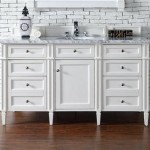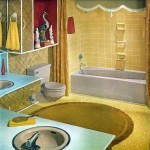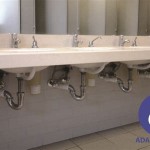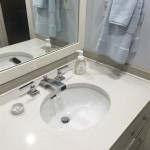How To Get Rid Of Red Worms In Bathroom Tiles
Discovering red worms in bathroom tiles can be an unsettling experience. These small, often thread-like creatures are not only aesthetically displeasing but can also indicate underlying problems with moisture and sanitation. Identifying the type of worm, understanding the reasons for their presence, and implementing effective removal and prevention strategies are crucial steps in addressing the issue and maintaining a clean and healthy bathroom environment.
The term "red worm" can refer to several different types of worms that might appear in a bathroom. The most common culprits are likely to be either drain worms (also known as sewage worms or sludge worms) or earthworms that found their way inside. Drain worms typically thrive in environments with a high organic matter content, such as the biofilms that form inside drains and pipes. Earthworms, on the other hand, can occasionally enter bathrooms through cracks, gaps, or even open windows, particularly during periods of heavy rain or flooding.
Accurately identifying the type of worm is a necessary first step. Drain worms are usually quite small, often less than an inch long, and may appear reddish-brown or pink. They are often seen wriggling in standing water or clinging to the sides of drains. Earthworms, in contrast, are typically larger, thicker, and have a more segmented appearance. Observing their behavior and physical characteristics will help in determining the appropriate treatment strategy.
Identifying the Source of the Infestation
Pinpointing the source of the red worm infestation is crucial for effective removal and prevention. Several factors contribute to their presence in bathrooms. Understanding these factors allows for targeted interventions to eliminate the worms and prevent future occurrences.
One of the primary reasons for red worm infestations is the presence of excess moisture. Bathrooms are naturally humid environments, and leaky pipes, dripping faucets, and inadequate ventilation can exacerbate the problem. Standing water provides an ideal breeding ground for drain worms and attracts earthworms seeking a moist environment.
Accumulation of organic matter in drains and pipes is another contributing factor. Hair, soap scum, and other debris create a nutrient-rich biofilm that sustains drain worms. Regular cleaning and maintenance of drains are essential to prevent this buildup.
Cracks and gaps in tiles, grout, and plumbing fixtures can also provide entry points for worms. These openings allow earthworms to enter the bathroom and also create hidden areas where drain worms can thrive. Sealing these cracks and gaps is crucial for preventing infestations.
Additionally, inadequate ventilation can contribute to moisture buildup and create a favorable environment for worms. Ensuring proper airflow in the bathroom helps to reduce humidity and discourage their presence.
Overflow from septic systems or sewer lines can also introduce drain worms into the bathroom. If a septic system is not functioning properly, or if there are leaks in sewer lines, drain worms can migrate into the plumbing system and eventually appear in the bathroom.
Therefore, a thorough inspection of the bathroom is necessary to identify potential sources of moisture, organic matter accumulation, and entry points for worms. Checking under sinks, around toilets, and along tile lines for leaks, cracks, and gaps is essential. Also, examining the drains for signs of blockage or buildup is equally important.
Effective Removal Methods
Once the source of the infestation has been identified, appropriate removal methods can be implemented. Several options ranging from natural remedies to chemical treatments are available. Selecting the most effective and safe method depends on the severity of the infestation and personal preferences.
One of the simplest and most effective methods is thorough cleaning and sanitation. This involves scrubbing the tiles, grout, and drains with a strong cleaning solution to remove organic matter and disrupt the worms' habitat. Focus should be placed on areas where worms have been observed, paying particular attention to cracks, gaps, and drains.
Using boiling water can also be effective in killing drain worms. Pouring boiling water down the drains can help to flush out and eliminate the worms. However, caution is advised to prevent damage to pipes, particularly PVC pipes, which can be susceptible to melting or warping at high temperatures. This method may need to be repeated several times to ensure complete eradication.
Vinegar and baking soda is a natural and relatively safe option for cleaning drains and killing worms. Pouring a cup of baking soda down the drain, followed by a cup of vinegar, creates a chemical reaction that can help to break down organic matter and eliminate worms. After allowing the mixture to sit for about 30 minutes, flush the drain with hot water.
Diatomaceous earth (DE) is another natural and effective remedy. DE is a type of powder made from fossilized diatoms, and it is harmless to humans and pets but deadly to insects and worms. Sprinkling DE around the affected areas, such as along tile lines and around drains, can help to kill the worms by dehydrating them. Food-grade DE should be used, and avoid inhaling the powder during application.
Chemical drain cleaners can also be used, but they should be used with caution. These cleaners typically contain harsh chemicals that can be harmful to humans and the environment. Always follow the manufacturer's instructions carefully and wear protective gear, such as gloves and eye protection, when using chemical drain cleaners. Moreover, avoid mixing different types of drain cleaners, as this can create dangerous fumes.
For severe infestations, professional plumbing services may be necessary. Plumbers have specialized tools and equipment to thoroughly clean and inspect drains and pipes, and they can also identify and repair any underlying plumbing problems that may be contributing to the infestation.
After implementing a removal method, it is important to monitor the affected areas for any signs of re-infestation. Repeat the cleaning and treatment process as needed to ensure that the worms have been completely eliminated.
Preventative Measures to Avoid Re-infestation
Preventing future infestations of red worms in bathroom tiles requires ongoing maintenance and proactive measures to address the underlying issues that contribute to their presence. Implementing a combination of cleaning, maintenance, and environmental control strategies can help to keep the bathroom free of worms.
Regular cleaning of the bathroom is essential. This includes scrubbing the tiles, grout, and fixtures with a disinfectant cleaner to remove organic matter and prevent the buildup of biofilm. Pay attention to areas that are prone to moisture, such as the shower, sink, and toilet.
Maintaining clean drains is also crucial. Regularly flushing the drains with hot water and using a drain cleaner or natural remedy, such as vinegar and baking soda, can help to prevent the accumulation of hair, soap scum, and other debris. Drain strainers can also be used to catch hair and other debris before they enter the drain.
Addressing leaks and moisture problems promptly is essential. Repairing leaky faucets, pipes, and toilets can help to reduce moisture levels in the bathroom and discourage worm infestations. Check under sinks, around toilets, and along tile lines for any signs of leaks.
Ensuring adequate ventilation in the bathroom is important for reducing humidity. Running the exhaust fan during and after showers and baths can help to remove excess moisture from the air. Opening windows when possible can also improve ventilation.
Sealing cracks and gaps in tiles, grout, and plumbing fixtures can help to prevent worms from entering the bathroom. Use caulk or sealant to fill any cracks or gaps that may provide entry points for worms.
Properly disposing of organic waste is also important. Avoid flushing food scraps, coffee grounds, and other organic matter down the toilet or drain. These materials can contribute to the buildup of biofilm and attract drain worms.
Regularly inspecting the bathroom for signs of worm activity is a proactive measure. Checking along tile lines, around drains, and under sinks for any signs of worms allows for early detection and prompt treatment.
Considering professional plumbing inspections can also be beneficial. A plumber can thoroughly inspect the plumbing system for any underlying problems, such as leaks or blockages, that may be contributing to worm infestations. They can also provide recommendations for maintaining a healthy plumbing system.
By consistently implementing these preventative measures, the likelihood of red worm infestations in bathroom tiles can be significantly reduced, ensuring a cleaner, healthier, and more pleasant bathroom environment.

How To Get Rid Of Earthworms In Bathroom Follow These Simple Steps
How To Get Rid Of Red Worms Living In My Bathroom Quora
How To Get Rid Of Red Worms Living In My Bathroom Quora

Worms Living Underneath Bathroom Tiles Are Earthworms All About
How To Get Rid Of Red Worms Living In My Bathroom Quora

Worm In The Bathroom Here Are Tips To Get Rid And Repel Them

How To Get Rid Of Worms In The Toilet Quick And Simple Tips

How To Get Rid Of Worms In The Bathroom And Drains

Red Worm Probably Earthworm Or Bloodworm All About Worms

Thin Red Worms In Shower Could Be Bloodworms All About







